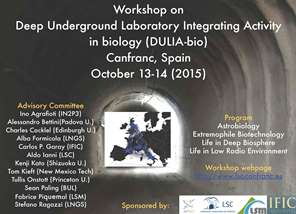Speaker
Thomas L. Kieft
(New Mexico Tech)
Description
Several important questions regarding the deep continental biosphere remain largely unanswered, including: 1) What factors control the maximum depth limit of life? 2) What are the sources of carbon for deep life? 3) What processes regulate the energy flux for deep life? and 4) Which organisms are actively recycling C and which are inactive, e.g., spores? Opportunities to address these important questions are limited by the cost of drilling to great depth. As an alternative to drilling from the surface, we’ve been sampling extremely deep fracture water (1-4 km) in the Kaapvaal Craton of South Africa via existing boreholes in gold, diamond, and platinum mines. We have found that 1) deep, ancient fracture waters contain diverse, indigenous microbial communities with cell abundances of ~103-4 cells mL, 2) cell turnover times are ~1-2 years at 3 km and 55°C, 2) deep saline fracture waters, ~2.0 Ga, are rich in radiolytically generated H2 and abiogenic hydrocarbons, 3) H2 flux is accentuated by seismic activity, 4) CH4 and CO2 are the carbon sources for biomass, and 5) more complex organic C appears to be generated in situ by microbes growing on these energy sources and carbon substrates. These subsurface anaerobic ecosystems are functioning completely independently from the surface photosynthetically driven world and could even be analogs for subsurface life on other planets. Culture-independent analyses (clone libraries and pyro-tag sequencing of 16S rDNA, metagenomic sequencing, transcriptomic sequencing, and single cell genome sequencing) have revealed indigenous, novel microbial communities with active metabolic and evolutionary processes. Sulfate reduction and methanogenesis are the dominant terminal electron accepting processes. The sulfate reducer Candidatus “Desulforudis audaxviator”, has been detected in other deep fracture waters, e.g., in the Great Basin Desert, Finland, and off axial marine ridge basalt, suggesting that similar H2-driven subsurface microbial ecosystems are widespread. While mines are useful for short-term studies, dedicated underground laboratories can provide platforms for long-term monitoring and experimentation. Deep laboratories that are designed for other purposes, e.g., high-energy particle physics experiments, would be ideal. Some of these may be located in geological formations with the potential for abiotic H2 formation, i.e., sites featuring serpentinization, dissolution of ultramafic rocks, radiolysis of H2O, etc. Deep drilling for geomicrobiological studies can be situated at some distance from physics experiments and thus can be entirely compatible with ongoing studies. We envision a worldwide network of underground laboratories in which deep life studies collaborate with other scientific endeavors.
Primary author
Thomas L. Kieft
(New Mexico Tech)
Co-authors
Barabara Sherwood Lollar
(University of Toronto)
Cara Magnabosco
(Princeton University)
Esta van Heerden
(University of the Free State)
Maggie Lau
(Princeton University)
Ramunas Stepanauskas
(Bigelow Laboratory for Ocean Sciences)
Tullis C. Onstott
(Princeton University)
